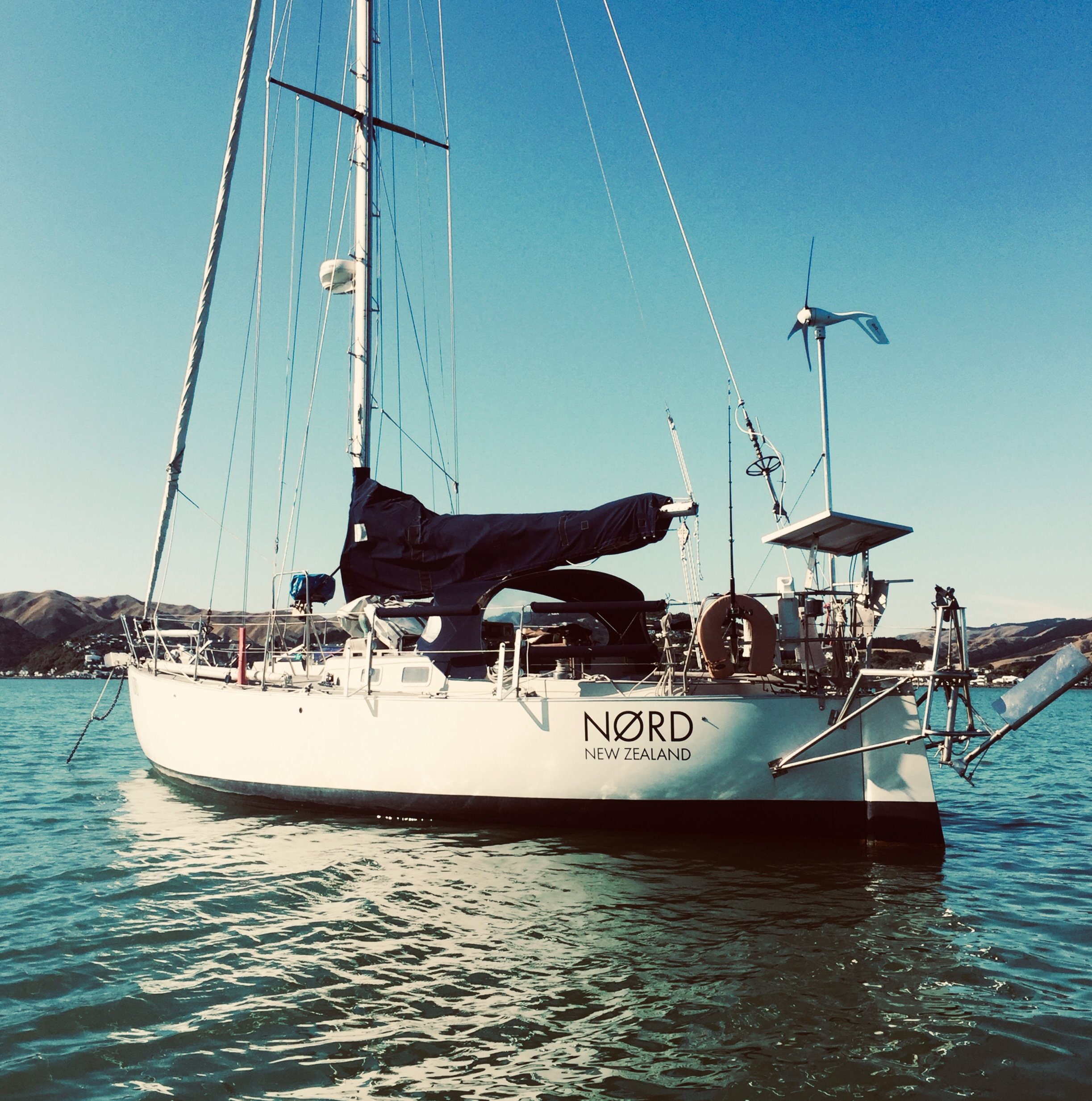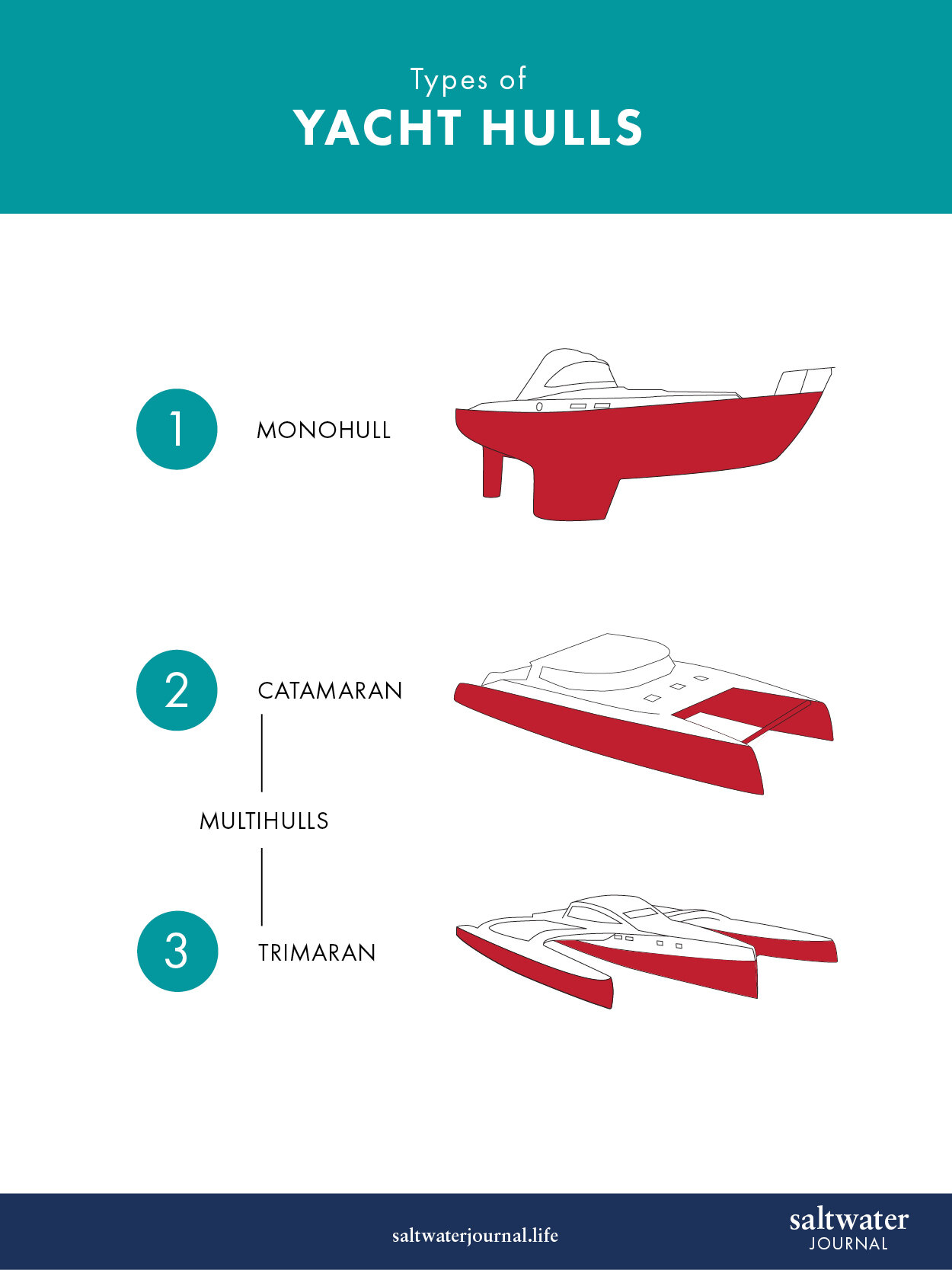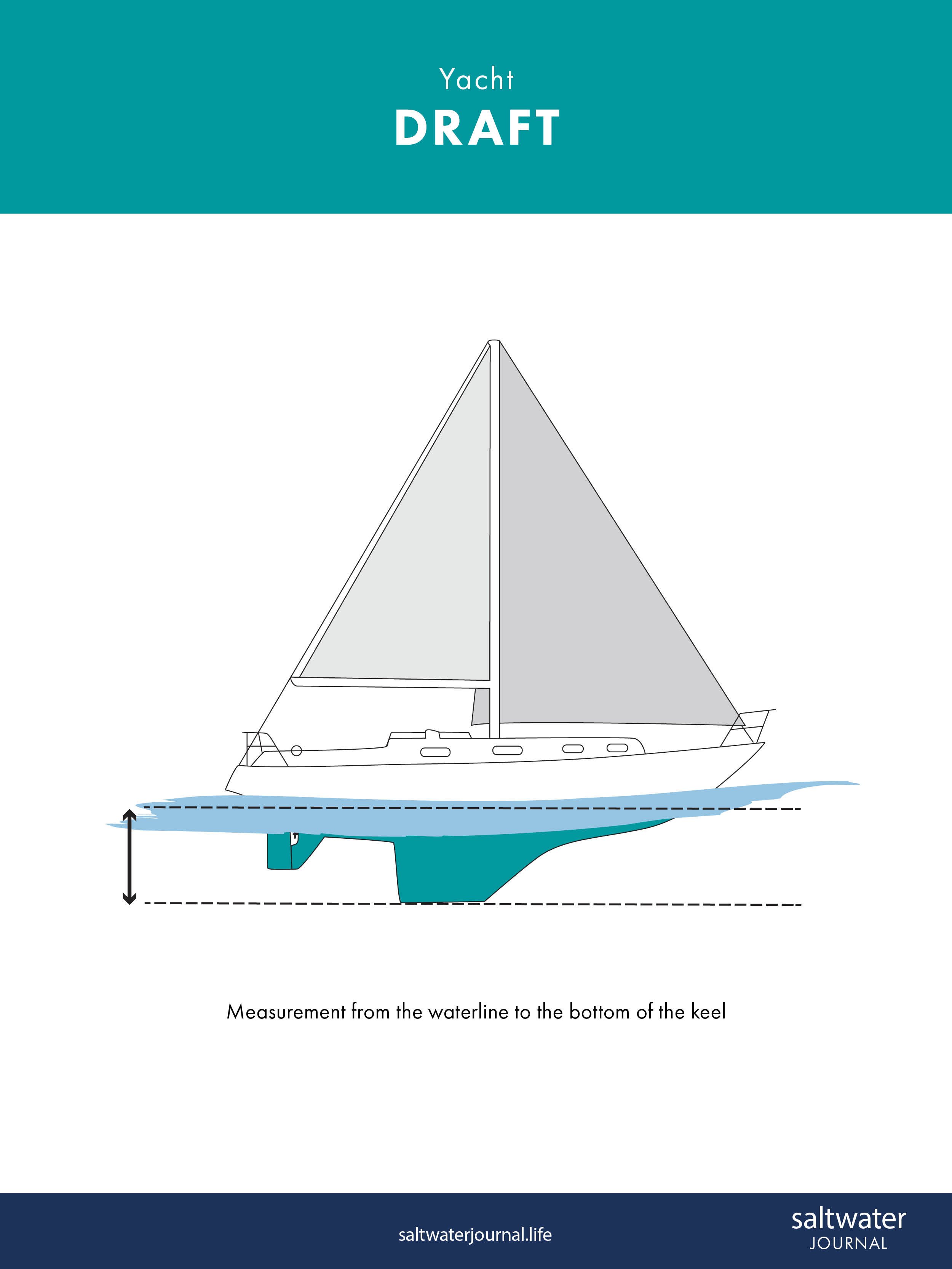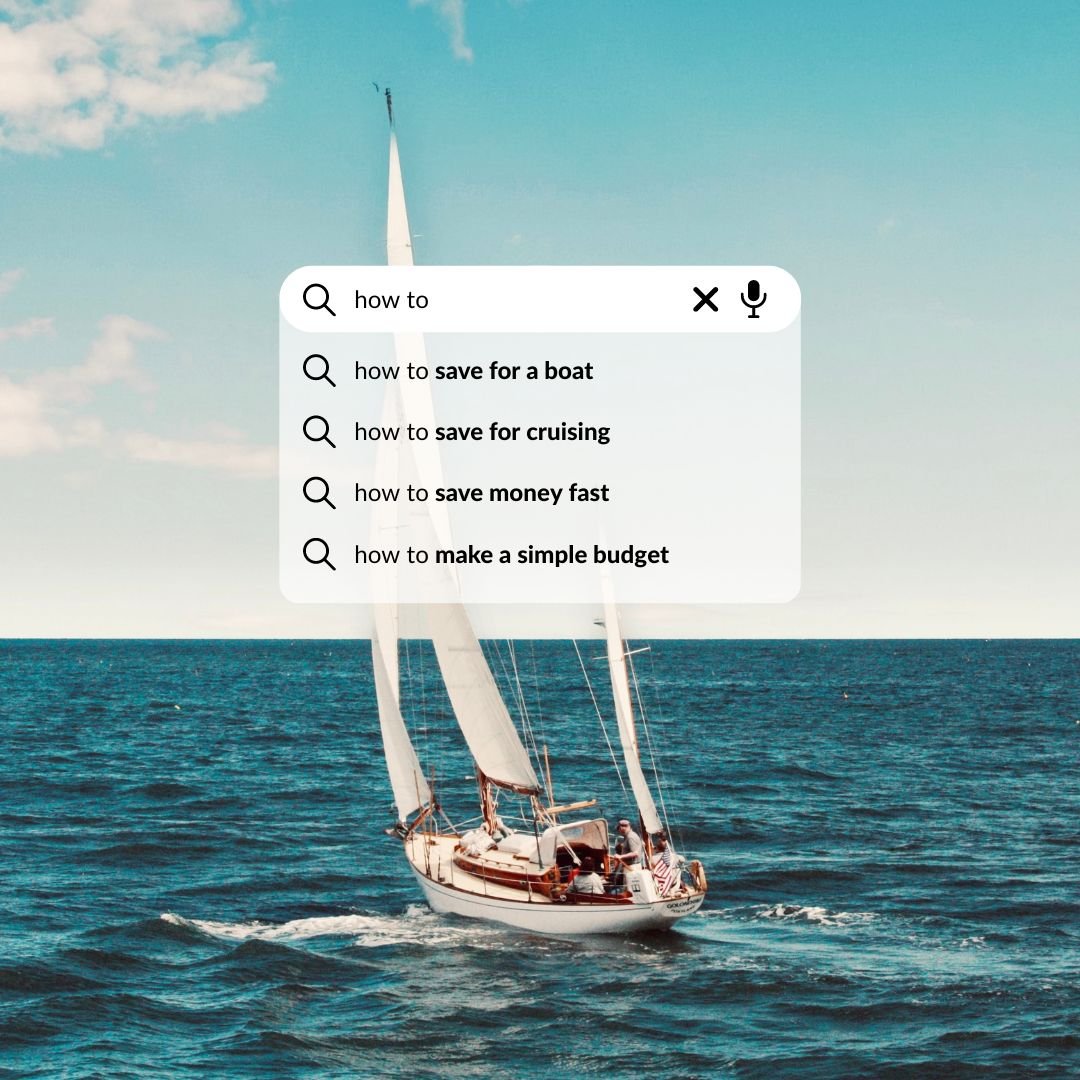Beginner’s Guide to Buying a Yacht
Saltwater Journal is reader supported.
When you buy through our links we may earn an affiliate commission (at no extra cost to you)
When I first started looking at yachts to buy I felt pretty overwhelmed at all the different types. How did I know what was a good boat? What would suit me and what I wanted to achieve?
If you’re new to sailing and feel like this too — you’ve come to the right place. Buying a boat is a big decision and an expensive one. No one wants to make a mistake and buy the wrong boat. Plus if you’re planning to live-aboard, there’s even more considerations about which boat will suit you and your lifestyle.
It’s completely normal to feel a bit anxious (and excited!) about the whole process the first time around.
Below, you’ll learn about the key basic factors to consider when buying a yacht, so you can feel much more confident about searching for your yacht and about making the right decision.
Here’s the 14 key factors to help you find the right boat.
Contents
Narrow down the type of boat you’re looking for.
There’s many different kinds of yachts and it’s easy to feel overwhelmed when you first start looking. To find a yacht suited to you, first you need to know what type of sailing you’ll be doing and narrow down the type of boat you’re looking for. An offshore yacht ready to cross oceans will need more gear and be set up differently to a live-aboard yacht that is mostly berthed in a Marina or used for harbour cruising.
Let’s start by getting to know the yachting basics.
The three main types of yachts are:
Monohull
Catamaran
Trimaran
Monohulls and catamaran’s are both popular liveaboard vessels. Most catamarans have great living spaces and will get you closer access to shore due to their shallow draft, although typically these are much more expensive than a similar sized monohull. Trimarans are often identified as a racing vessel, but many are liveaboard ocean cruisers and I suspect with Sailing La Vagabond moving from a catamaran to a trimaran, their popularity will gain a boost.
2. Decide on a hull material.
The hull material is one of the key factors in choosing the right boat.
Yacht hulls can be made from:
Steel
Fibre-reinforced or glass reinforced plastics (GRP) - either solid GRP or composite (balsa or foam core)
Aluminium alloy
Timber
Carbon fibre
Ferro-cement
Everyone you speak to will have their personal preference for the best hull material, and may well offer you stories warning you away from the other types. However, provided the hull is properly built and maintained, then any of these hull materials can be suitable for a cruising yacht
It’s important to know the advantages and disadvantages of each hull type and I recommend this summary by World Cruising and Sailing Wiki to help you choose a hull material that suits your experience (or are willing to learn maintenance for) and what feels best suited to where you’ll be travelling in your boat.
A word of caution — these days some older boats and ferro-cement hulls may be harder to insure (even if sea-worthy), so it’s best to check on Marine Insurance requirements before you purchase the boat, and always get an independent survey report. We’ll get to that shortly.
3. Understand the role of the keel.
The keel underneath the boat is a crucial part of a yacht design.
It provides important functions such as stability and control. As the boat heels sideways with the forces of wind and waves, the keel provides counterbalance to keep the boat upright and prevent it from capsizing. Within the keel is typically the boat’s ballast which is usually lead, sand or water.
The popular types of keel are:
Full or Long fin keel
Retractable keel
Bulb or wing keel
Deep fin keel
Bilge keel
Encapsulated keel
Each keel design provides different amounts of comfort (stability through the water), maneuverability (ability to turn quickly) and speed (less resistance underwater). For example, a full keel yacht will be slower but more comfortable in big seas than a deep fin keel. Understanding the key differences between keel types will help you build an overall picture of the yacht that will suit the sailing you’re keen to do.
NØRD is a 1977 Kaskelot with a fin keel
Our current yacht is a 1972 double-ender designed and built by Peter Bruun — as shown above, she’s got a fin keel in a swept backwards style.
4. What’s the draft?
The draft is the vertical distance between the waterline and the bottom of the hull (keel).
This will determine how much water your boat needs before it touches the bottom. Offshore yachts typically have a deeper draft (5-6 feet or more) but this can limit how close to shore you can get, when sailing in inlets, in areas of island reefs and lagoons. It’s also a consideration for navigating harbours and channels and crossing sandbars.
Our yacht’s draft is 1.9m so we need to watch the tides and ensure there’s enough water to get in and out of our Marina and over the local sandbar which at low-tide has a chart datum depth (lowest predicted depth at low-tide) of .09m.
5. Look for a proven yacht design.
If possible, buy a yacht by a well known designer.
There are many well proven yachts by designers recognised globally, that will help keep you safer and more comfortable at sea, and be likely to hold their resale value.
The age of the boat will often be a major factor in the make of boat you’re looking at. Some of the popular cruising yachts were hand built with great care and durability in the seventies so are now considered to be an older boat but if they’ve been well maintained by careful owners will likely outlive a manufactured boat built for economy of production that’s been thrashed as a charter boat.
Our first yacht was designed and built by Chris Robertson, a reputable New Zealand boatbuilder, for his own family and it was constructed from Kauri timber — an incredibly strong New Zealand hardwood that was laid in a double diagonal fashion (increased hull strength) with a fibreglass layer overtop. Given the care to the design and attention to the build, we felt confident that it was solid and fine cruising boat.
Our first yacht was designed and built by Robertson Boat Builders.
Built from timber with a glass overlay, she is a solid cruising yacht.
6. What size boat should you buy?
It’s a natural tendency to think that you need to buy the biggest boat you can afford. Surely it’s better to be on a large boat which will go faster and have way more space? It sounds good, but a bigger yacht may not always be the right boat for you.
To determine which size yacht is best for you, ask yourself these important questions:
What can you afford?
How many people will be living aboard?
What level of comfort and space are you prepared to compromise on or sacrifice?
Will your budget allow for maintenance of your yacht?
When will you be able to buy the yacht and go sailing?
Boat size is a matter of perspective.
For a trailer sailer, a full keel yacht will seem like a big upgrade, but if you’re living on a super yacht, everything smaller than 80ft is going to seem small! Whereas, if you’re looking at 34ft yachts, then a 40ft yacht will seem even much larger (and a bit like a floating apartment in comparison). Spend time on as many boats as you can to get as much experience for the feeling of the size and layout.
Here are the pros and cons for buying a small yacht vs a large yacht.
Smaller yacht (less than 36ft/12m)
PROS of buying a smaller yacht
Cheaper to buy
Less expensive to maintain
Easier to single-hand or manage with a small crew
Can provide opportunity to get sailing sooner
CONS of buying a smaller yacht
Less space onboard
Less internal storage
Smaller inbuilt water and fuel tanks
May not have bathroom wet area and shower
Sleeping arrangements more likely to be a v-berth and saloon set up.
Less deck area and cockpit space to store dinghy/extras (jerry cans, paddleboards etc)
Generally slower sailing speed*
*The hull speed of a boat is determined by the waterline (length of the yacht from the stern to the bow at the water) and the displacement (the amount of water the boat shifts by being buoyant).
Larger yacht (45ft/14m+)
PROS of buying a larger yacht
More internal storage space onboard
Larger inbuilt water and fuel tanks
Sleeping arrangements may include cabins
Likely to have seperate shower/wet area and more than one head
Can feel like a floating mini-apartment with separate areas for sleeping, bathing, working (workshop spaces can be found on larger boats)
CONS of buying a larger yacht
More expensive to buy
More expensive to maintain
May be more challenging to sail single-handed or with small crew
May take more time to save/finance to buy and delay your sailing plans
7. What’s the maintenance cost of owning a boat?
In comparing the pros/cons above it may seem that buying a larger boat is a no-brainer. After all, who doesn’t want more space to live and move in, with more practical comforts of a proper bathroom and spacious galley for cooking?
The larger the boat, the more expensive everything becomes.
Bigger yachts have more fittings, electronics, parts and gear — so there’s more to fix, maintain and replace.
In addition, the costs increase for:
Rigging and sails
Deck hardware (winches, blocks etc)
Mooring/berthing
So while you may be able to buy a larger boat, you’ll need to consider your sailing/lifestyle budget and factor in maintenance costs too. But regardless of your boat size, you’ll need to spend money to make repairs and keep it in good condition.
Budget 10% of your boat value for maintenance annually.
The general rule of thumb is a 10% budget and after four years aboard, we’ve found this to be accurate. Some years the spend may be slightly less, others slightly more but the average seems to come out at that figure.
If your sums are favourable and you’re able to cover all the maintenance expenses no problem — that’s brilliant — go for it! But if you’re now thinking to yourself maybe I’ll need to look at smaller boats, don’t be disappointed because there’s some encouraging news in this for small yacht owners.
8. Discover freedom with a smaller boat.
Buying a smaller (usually less expensive) yacht will allow you to set sail earlier and achieve your goals quicker of moving aboard and exploring the ocean. This will give you invaluable experience — especially as you’re learning to sail, and you’ll quickly develop skills and knowledge from doing so. Lin and Larry Pardey — pioneers of the small blue water cruising famously encouraged sailors to “Go small, go simple and go now.”
Many people set their sights on a dream boat that will take them years to save for, or will be in debt for years paying it off, tying them to land. Not being willing to compromise on boat size has stalled many a sailing journey.
Jeff and I have friends who own 40+foot boats and they’re a pleasure to spend time on. A whole cabin to ourselves? Wow! Our own hot shower? Bliss! But it’s too much boat for the two of us. Even when we’re sailing, we notice the increased boat size has a completely different feel and power to our own 34ft yacht. We’re more comfortable knowing we’re able to sail and manage ours single handed.
We also enjoy simpler systems onboard our boat and feel confident that when something breaks, we’ll be able to fix it. Being able to maintain most of it ourselves keeps costs down and we can save money for our next adventure.
So what else should you think about when buying a boat?
9. Look for easy engine and system access.
Keep in mind when looking at your boat, how easy the engine and systems are to access and maintain.
You’ll find life much easier (and less like a contortionist) if you can access fairly quickly and simply the major components such as the alternator(s), belts, starter motor, seawater pump and impeller, injectors, oil changing, fuel and oil filters, engine intake seacock, seawater trap, transmission and stern glands.
Most yachts have hard to reach spaces to run wiring and check systems.
Simple access to the engine will make life easier in the long-run.
10. Think about safety when buying a boat.
Safety should be a primary consideration in choosing a safe cruising and liveaboard boat.
Assess the yacht by asking these important safety questions:
How easily can it be sailed single-handed (by choice or in an emergency)?
How protected is the cockpit?
How can the dinghy be safely stowed?
Are the stanchions and lifelines strong?
Are there sufficient handrails?
How easily accessible is the anchor chain?
Is there a ladder or open transom to board from in-water?
Where will the liferaft be stowed for easy access by the weakest crew member?
Is there a manual and emergency bilge pump system?
11. Extra questions to ask the previous owner.
The more information you have about the yacht the better.
It’s worth asking a few extra questions from the boat owner or broker that will help you get a good idea of how well it’s been built, where the boat’s been, and how well it’s been cared for.
Cover these questions when finding out about the yacht:
Who built it?
Are there any original plans or build information?
How many owners has she had?
Have maintenance logs been kept?
Where has the boat travelled?
12. Get a full survey on the boat.
A survey will help you know what you’re buying and avoid missing something seriously wrong.
A good surveyor is worth their weight in gold, and will help you avoid buying a yacht with obvious or hidden pitfalls, especially if you’ve already fallen in love with a boat and are dreaming of your mojitos on deck. Your offer on the yacht should be subject to satisfactory surveys, and include this in the contract.
Getting the experts in (even if you’re trying to minimise cost), will save you thousands of dollars in the long-run with a comprehensive report on the seaworthiness of the yacht. We recommend you learn more about surveys and the different types you can have to assess the seaworthiness of your yacht.
On the survey to buy our second yacht (fibreglass), the surveyor identified the start of osmosis with small bubbles covering the hull. We put the sale on hold until the owner did further investigation into the cause/severity of the bubbling. Some of this was small osmosis patches, some of it was bubble in layers and layers of old paint. In the end, we negotiated a reduced sum on the boat, to allow us to scrape the boat back to it’s gelcoat, repair the small osmosis patches and apply fresh primer and antifoul. While it was a lot of work, we were glad that our surveyor knew what to look for and gave us the confidence to either walk away from the sale, or go ahead with repairs we were happy with.
Ready for action
Scraping the hull is a slow process
Quite happy to maintain a smaller yacht
Where do you find a good surveyor?
Ask around any boat yard or sailing club, and you’ll find that there’s always one or two names that keep cropping up of reliable surveyors of excellent reputation. Don’t always take the seller's word on the best surveyor, check this for yourself.
It’s important to have an out of water survey when buying a boat, so the surveyor can assess the hull, rudder, propeller and through-hull fittings.
13. How much should you offer?
Do your research of similar boats for sale and get a good idea of how well the yacht is positioned on the market. Here’s the best places to look for boats.
Most sellers are willing to negotiate on price, but if it’s already in the expected price range, then it’s reasonable to suggest you would offer a fair price. Some people will approach with a cheeky low-ball offer, others will pay the asking price and be happy about it. Your objective should be to feel comfortable paying what you think the boat is worth.
Consider too, the length of time the boat has been on the market. If it’s been advertised for a long time, it may indicate either the boat is overpriced (and the owner has unrealistic expectations), or the market is slow, or there’s something about the boat that’s putting others off from the purchase.
However you approach the owner or broker with your offer, be respectful, honest and polite — it goes a long way!
From our experience in selling a yacht for the asking price, we were much more willing to go the extra mile to help the buyer by keeping an eye on the boat while he was away, and then with organising and relocating the vessel to its new home.
14. What’s the boat buying process?
Do your research on the boat
View the boat
Make an offer subject to survey and sea trial
Negotiate/Agree on price
Haul out for full survey (cost of survey paid for by Buyer)
Take sea trial
If happy with survey and sea trial (with negotiations for any issues identified) —
3a. Complete sale and purchase contract/agreement
3b. Pay depositPay balance on date of sale
Pop the champagne!
A word of encouragement
Remember, that unless you have an unlimited budget to design and build your dream boat from scratch, there will always be decisions and sacrifices to which boat you choose, from sleeping arrangements, to galley size, to headroom. The more boating experience you get, the quicker you’ll learn what you’re willing to compromise on, and what’s a deal-breaker.
Sometimes plans fall through with the sale — maybe the boat you thought looked great turns out to have issues at the survey (ones you’re not prepared to negotiate price over), or your finance doesn’t stretch to the boat you really want, or you’re outbid by a cash offer. These are not reasons to give up your dream. Keep looking and researching as the more you learn, the more confident you’ll feel about taking the plunge and starting your adventure.
There’s a common saying that the happiest days of a sailor’s life is when they buy and sell a boat. While there may be some truth in this, I suggest a less cynical perspective that the days in between will bring much happiness too. Provided you’re realistic about the costs and work involved in owning and maintaining a boat, you’ll never regret giving it a go — there’s nothing quite like living on the water in your own sailboat.
Editor — Keel illustration updated 5 August 2024























Discover the most extensive list of boat sale websites to help you in your search to buy a boat, and learn new places to look locally, nationally and world-wide.